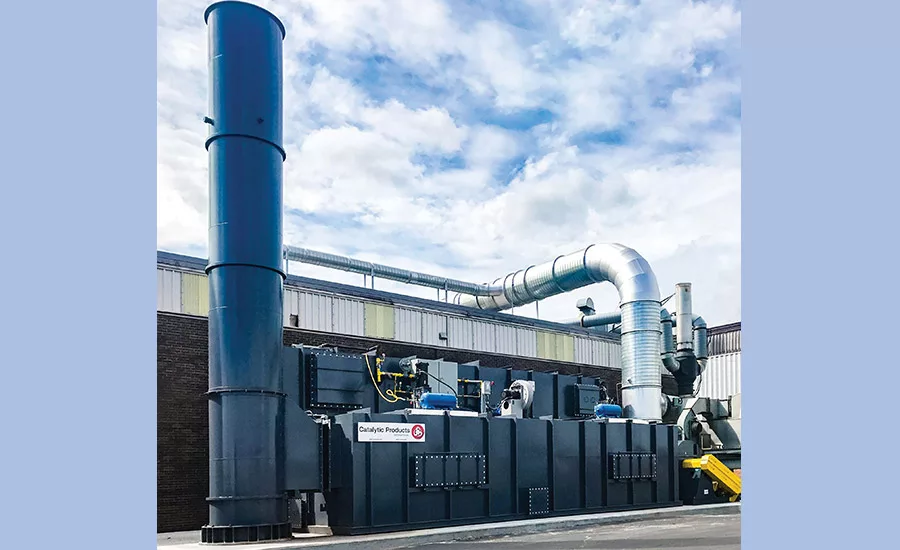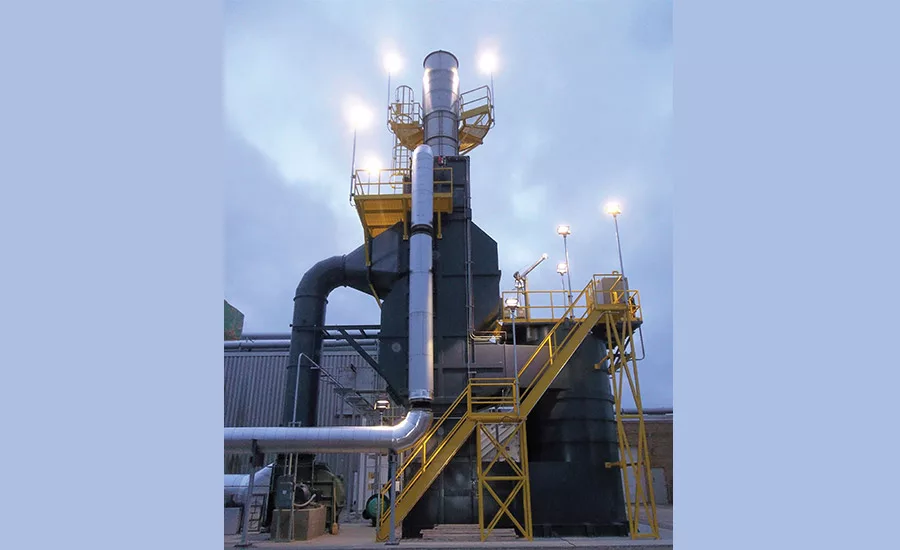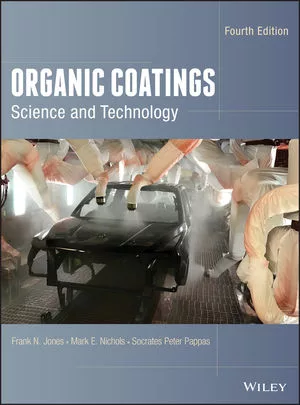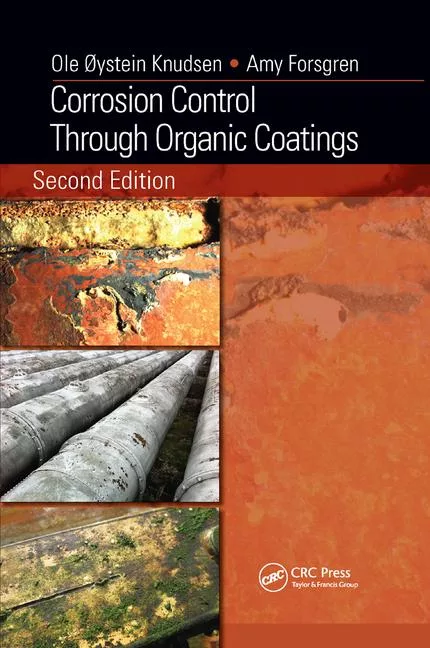Keeping the Work Atmosphere Clean of Volatile Organic Compounds
Regenerative thermal oxidizers can be the most effective and cost-efficient way to destroy VOCs in the adhesives and sealants industry.

35,000 SCFM regenerative thermal oxidizer (RTO).
Photo courtesy of Catalytic Products International

A 25,000 SCFM thermal oxidizer for silicone.
Photo courtesy of Catalytic Products International
The manufacture and application of solvent-based adhesives and coatings release significant emissions of volatile organic compounds (VOCs) into the environment. When evaporated, these VOCs react with nitrogen oxide (NOx) in the presence of sunlight to form ground level ozone; as such, they are regulated as an ozone precursor under the U.S. Environmental Protection Agency’s (EPA) criteria pollution program. In sufficient quantities, VOCs can cause adverse effects on human health, including eye, nose and throat irritations; headaches; dizziness; visual disorders; and memory impairment.
VOCs and hazardous air pollutants (HAPs) are regulated by federal, state and local regulatory agencies through guidelines established by the Clean Air Act. The EPA has developed National Emission Standards for Hazardous Air Pollutants (NESHAP) for paint manufacturing facilities and numerous coating application industries. In general, these regulations limit the amount of VOC emissions (usually quantified in tons allowed) that can be emitted. Emissions limits differ across industries and locations.
While great strides have been made by industry to reduce air pollution, including the development of water- and powder-based materials, many solvent-based coatings are necessary to improve product performance and extend product life. VOCs are typically found in the following areas in coatings manufacturing or in surface coating operations:
- Coatings application stations or booths
- Flash-off areas (low air movement)
- Curing or bake oven exhaust (a large majority of emissions are found in this step)
- Paint storage areas
- Paint mix areas
- Storage tanks
Controlling Emissions
Thermal oxidation is the most widely accepted technology available to control VOC emissions from the manufacture and application of solvent-based coatings. Oxidation of VOCs and other air pollutants works by a simple oxidation reaction of the harmful air pollutants with oxygen and heat. In this environment, the VOCs are converted to inert byproducts like CO2, water vapor (H2O) and usable heat. These harmless byproducts are released to the atmosphere or used within primary or secondary energy recovery techniques to further lower the operational costs.
A regenerative thermal oxidizer (RTO) is the most effective and cost-efficient way to destroy VOCs from these industries. With thermal efficiencies of up to 97% and destruction rate efficiencies (DRE) that can exceed 99%, RTOs provide the highest possible removal rates at the lowest cost. Fully oxidizing VOCs requires a combination of residence time, temperature, turbulence or mixing of the combustion air with the process gas.
Each RTO system incorporates specialized ceramic media in the regenerator (heat transfer bed) to allow for the highest thermal efficiencies. RTOs operate by preheating the process air as it passes upward through the first ceramic heat exchange media. This pre-heated air then exits the heat exchange media and enters a combustion chamber, where it is heated to the setpoint temperature and oxidization of the VOCs is completed. Hot, clean air is then passed downward through the second ceramic heat exchange media bed, where it is cooled. This regeneration of the heat exchanger allows for much higher thermal efficiencies than traditional recuperative-style heat exchangers.
Silicone Coatings
Many industries use coatings containing silicone for various coated products. While the silicone additives may provide special properties to coatings and inks, and optimize processes, they also pose an issue for VOC control equipment. Silicone is vaporized in the drying process along with the VOCs and is forced into the dryer exhaust. When heated above certain temperatures, silicone forms an inorganic particulate, silicon dioxide (SiO2), which clings to hot metallic surfaces and forms a destructive and efficiency-robbing barrier layer. SiO2 poisons the catalyst in a catalytic oxidizer, and can affect RTO valving and clog ceramic media. SiO2 also creates boundary layers in typical shell and tube heat exchangers.
While the air pollution control equipment is installed to destroy the VOCs, any system must be designed to also process the silicone vapors. By using a special silicone media design, providing reduced pressure drops and the highest thermal efficiencies, an RTO has the ability to destroy VOCs and tolerate small amounts of particulate carryover, including silicone. For processes such as adhesive manufacturing or adhesive coating, which produce considerable amounts of particulate carryover or high SiO2 loadings, a thermal oxidizer specifically designed for high levels of silicone may be most suitable.
For more information, phone (847) 550-4106 or email sklostermeyer@cpilink.com.
Looking for a reprint of this article?
From high-res PDFs to custom plaques, order your copy today!






